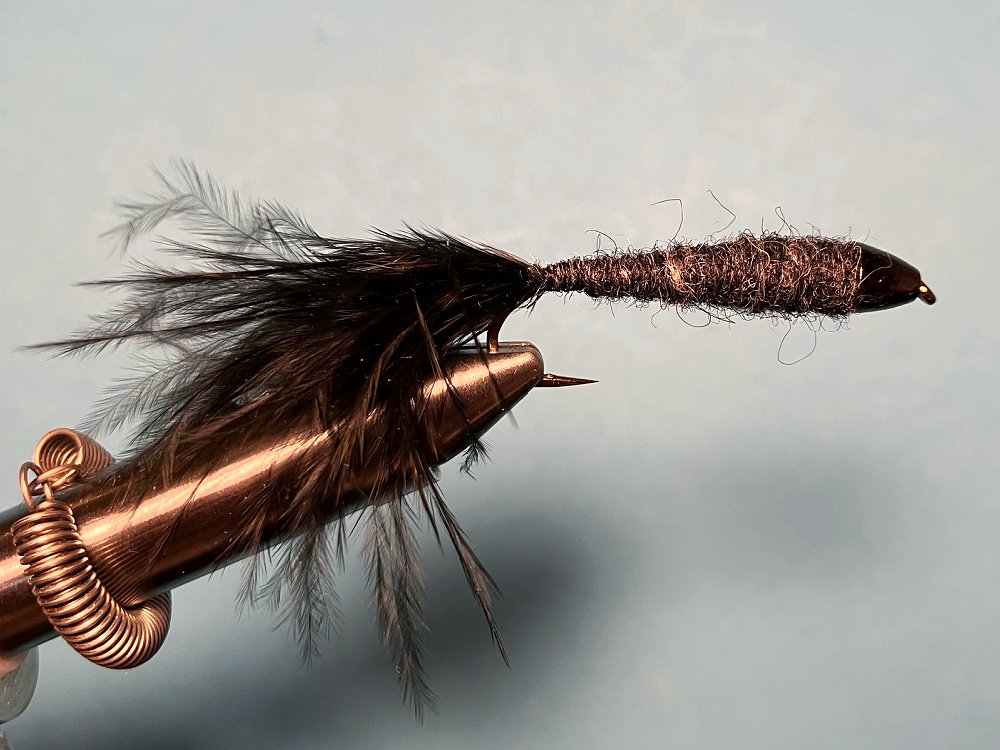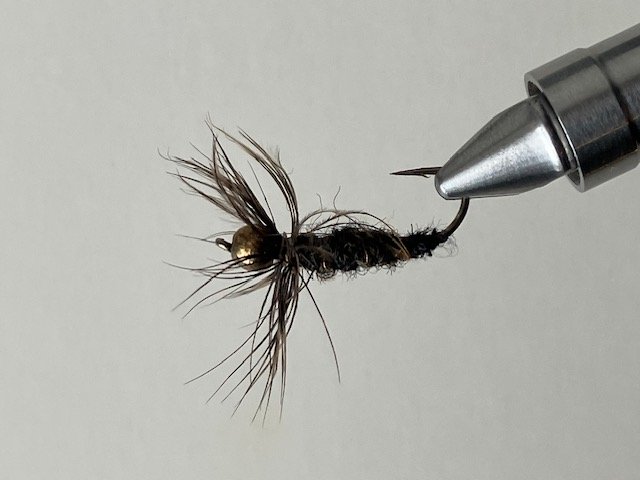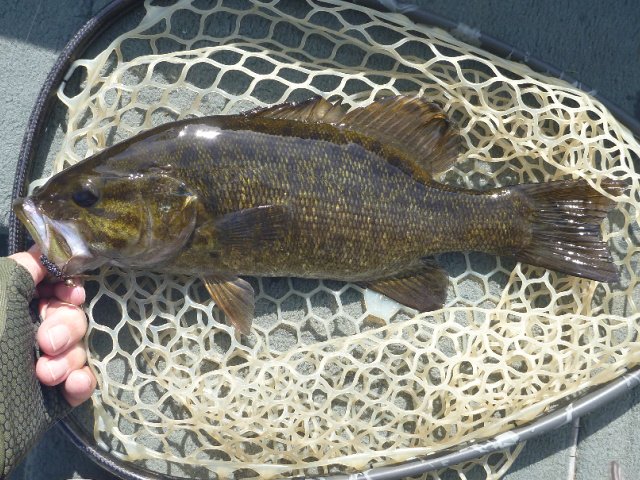Tariffs and Shipping Delays
All items that are in stock, listed to the right, are in the USA and are not subject to tariffs or shipping delays. If you want premium trout rods, they're here now.
Conehead Buggers and Beadhead Keepers
We've all had it happen: a thought pops into your head from out of nowhere. A little over a week ago it happened to me: Conehead Buggers should be fished with ultralight spinning rods, not fly rods!
Mention conehead buggers and people immediately think fly fishing. Really, though, conehead buggers are more appropriate for an ultralight spinning rod rather than a fly rod. Fly rods are best suited for fishing unweighted flies, although I think most people also fish bead head nymphs. Once the weight of the "fly" even approaches a gram, though, whatever grace there might have been in a fly cast is gone. The film A River Runs Through It would have been a box office flop if the fly casting scenes (which sold the movie) were filmed casting a conehead bugger.
A tungsten conehead by itself can weigh over a gram. Add a hook and wet materials and casting one with a fly rod becomes chuck and duck (and a chance for a free ear piercing). About a gram is a perfect weight for an ultralight spinning rod and light line, though. In Joe Robinson's book Piscatorial Absurdities, he wrote about what he called "flures," which are a bit of a cross between a fly and a lure. Seems to me that a conehead bugger fits that definition pretty well.
I guess people think "fly fishing" because a Woolly Bugger clearly is a fly - and one of the more popular ones at that. A beadhead Woolly Bugger clearly is still a Woolly Bugger and thus is still a fly. A conehead Woolly Bugger is still a Woolly Bugger and, yes, it is still a fly (at least, according to the New York State Freshwater Fishing Regulations). Legions of fly fishers cast conehead Woolly Buggers. Legions of spin fishers cast Trout Magnets, which actually weigh less than a conehead Woolly Bugger tied with a "large" Orvis tungsten conehead!
 Size 4 Conehead Killer Bugger - 1.8 grams (and still a fly)!
Size 4 Conehead Killer Bugger - 1.8 grams (and still a fly)!Although I knew it would work, the only way to actually prove it was to take a couple conehead buggers to Maine with me on this year's vacation and try to cast them with my ultralight spinning rods. Well, they cast like bullets (even with my baitcaster)! Unfortunately, though, they sank like bullets also, and the only retrieves that kept them from getting stuck in the rocks were too fast to draw strikes from the smallmouth bass. If a smallmouth bass, or a trout for that matter, wants your lure, you almost cannot retrieve it fast enough to keep it away from the fish. They key, though, is how badly it wants your lure. In Maine that week, they wanted slow retrieves.
Beadhead Keepers
 Beadhead Keeper Kebari
Beadhead Keeper KebariAt some point, I don't recall when, I tied a few beadhead Keeper Kebari. The one in the photos above and below, weighs .95 grams, well within the weight range that an ultralight spinning rod can cast effectively.
 Proof of concept. Smallmouth bass caught with a beadhead Keeper Kebari cast with the Tenryu Alter RZA5102S-LLT.
Proof of concept. Smallmouth bass caught with a beadhead Keeper Kebari cast with the Tenryu Alter RZA5102S-LLT.The beadhead Keeper Kebari proved to be an extremely successful fly. I caught lots of fish with it, both smallmouth bass and redbreast sunfish. I couldn't cast it as far as I could a 1.5 g Shimano Slim Swimmer spoon, which is not surprising given that it weighs less and has more wind resistance. Still, I could cast it plenty far enough to catch fish. I have not tried it in a stream for trout, but I am confident that it would work (and that it would be easier to cast with an ultralight spinning rod than a fly rod).
I consider the point proven. Conehead buggers and beadhead keepers should be fished with ultralight spinning rods!
I don't sell them, and I doubt Kiwi would either. This is a rant, not an offer.
Header photo: Tenryu Rayz RZ4102B-UL, Shimano Calcutta Conquest BFS-HG ('17)
Warning:
The hooks are sharp.
The coffee's hot.
The fish are slippery when wet.
Whatever you do, do it with finesse!